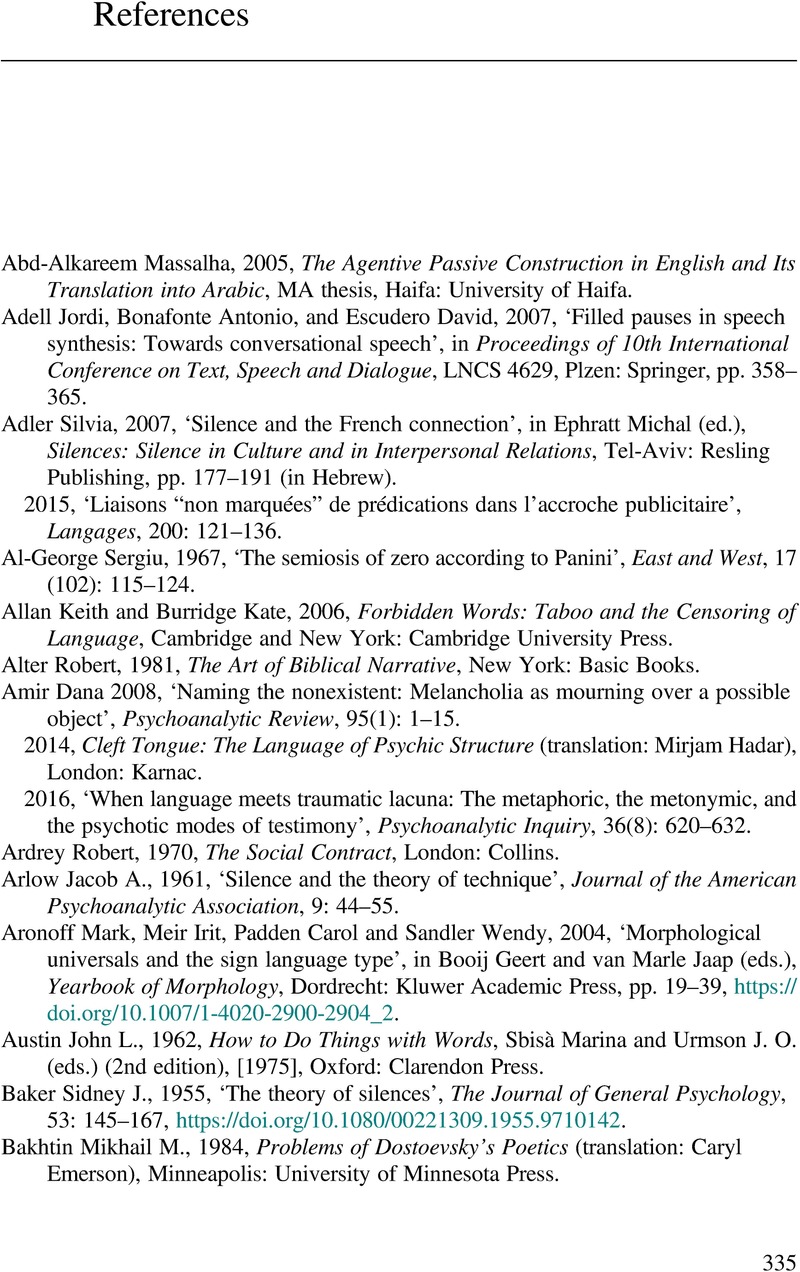References
Published online by Cambridge University Press: 18 August 2022
Summary

Information
- Type
- Chapter
- Information
- Silence as LanguageVerbal Silence as a Means of Expression, pp. 335 - 350Publisher: Cambridge University PressPrint publication year: 2022
